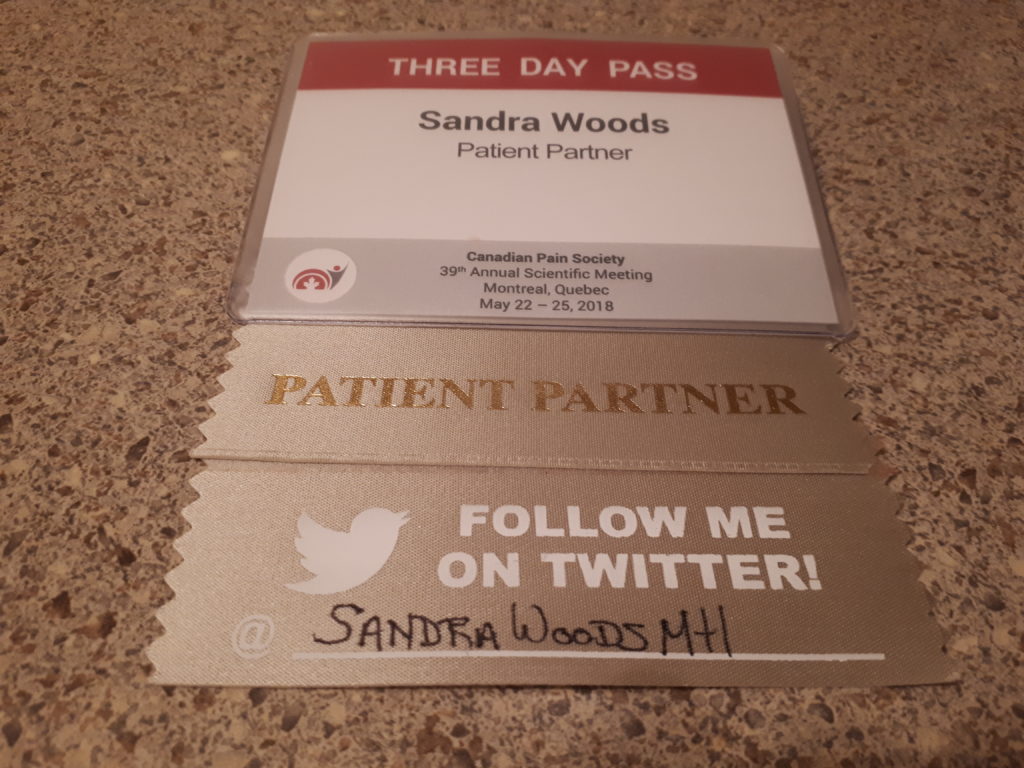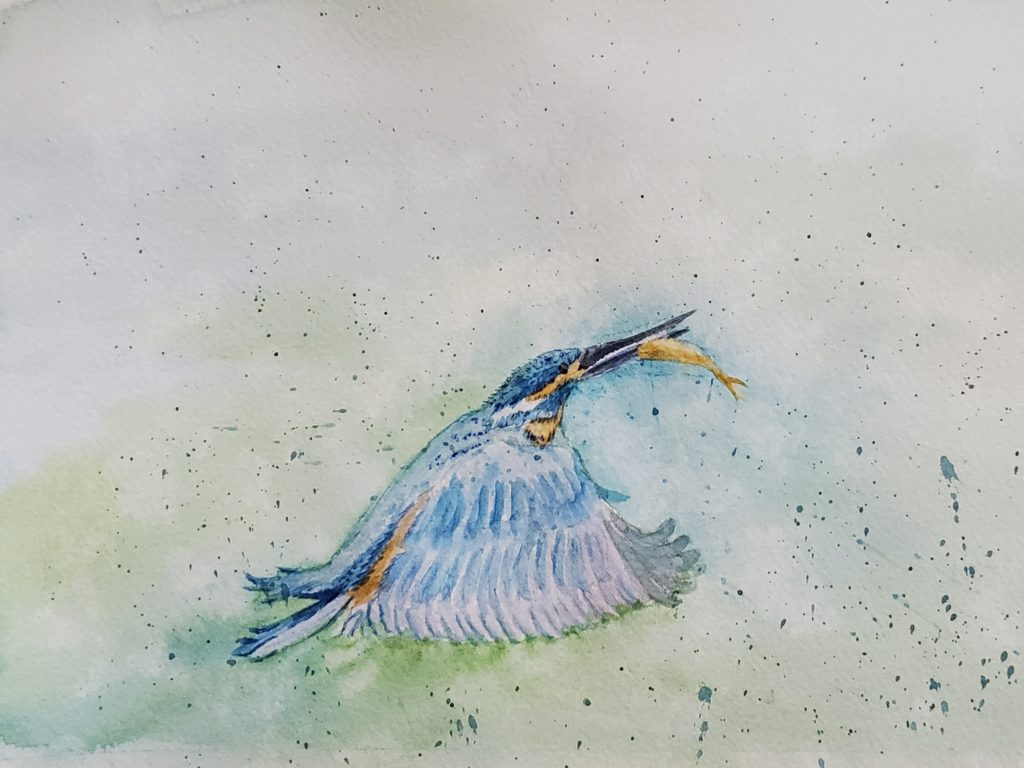That title looks a lot like alphabet soup, doesn’t it? Trust, me it won’t take long to explain what all those acronyms means. Let’s start right away! Next month, May 11-13, I’ll be attending the Annual Scientific Meeting (ASM) of the Canadian Pain Society (CPS). There we go, two of those acronyms already make sense, right? We’re halfway there!
The ASM is the annual CPS conference, during which new pain research findings are shared. Most CPS members are researchers or healthcare professionals who treat people in pain; doctors, nurses, occupational therapists, physiotherapists, and many others. There are also trainee-members, people studying to become healthcare professionals or researchers.
I’d like to point out that the research findings at the ASM are often presented by trainees, as these include PhD students and trainees doing post-doctoral fellowships; a lot of breaking research is done as part of PhD or post-doc projects. One of my favourite parts of the ASM is the “Poster Sessions”, during which a trainee or research team will stand beside a poster describing their research – in a room full of other research posters.
It sounds a bit overwhelming, but the Poster Sessions are set up almost like booths at a county fair – with each poster as a stall. You walk around and read the poster titles, and then stop to chat – with the actual researchers! – about any topics or projects that interest you. It’s a fantastic way to learn about new research, and to make connections. And it’s lovely to see the enthusiasm of these trainees, of people who are starting their careers with the goal of helping people in pain!
There are also some members of the CPS who, like me, live with chronic pain (CP) conditions. The CPS tends to call us PWLE, for ‘People With Lived Experience’ of chronic pain, but I usually prefer the term ‘Pain Patient’. Or, when I’m working directly on a project or with an organization, I use the term ‘Patient Partner’.
Prior to being struck with a bizarre disease named Complex Regional Pain Syndrome (CRPS) back in 2016, and then developing a related mild cognitive impairment (MCI) at the end of 2018, I worked in healthcare too. My field was bioethics, or biomedical ethics, and I specialized in research ethics. So it’s fairly obvious that I already had an interest in healthcare research, long before becoming a pain patient! (And I think we’ve just covered the last of the four acronyms in the title of this post. That wasn’t too bad, right?)
The last time the ASM was here in Montréal was in 2018, and I really enjoyed attending that event. I’ve always adored attending any kind of healthcare conference, really, but in some ways I’m dreading it this year.

When I was diagnosed with a mild cognitive impairment (MCI) at the end of 2018, related to my CRPS, it changed my life in many ways. It had become almost impossible for me to concentrate or focus on anything for much more than an hour at a time, and I’d often forget anything after that hour or so had passed. Because of the MCI, I had to step away from a career that I loved, from my dream job in bioethics. That was really hard for me to accept, and it took me almost a year to grieve for that loss of my life plan and of my sense of self.
Since then, I’ve started in new directions. Although still unable to work per se, I’ve been focusing much more on my volunteer activities – from raising awareness of chronic pain to being a Patient Partner on several projects with universities and health agencies across the country. I’m up-front at the start of each project, that I can only handle meetings of about an hour at a time – and often the researchers or quality-improvement teams are happy to work around my limitations.
And I’ve been learning to paint, with watercolours, since last year. This has been a truly lovely experience, despite all the frustrations of trying to learn a new skill while your brain isn’t quite working! In fact I just submitted a painting to the annual CPS art contest, for which the winners will be announced at the ASM. So, wish me luck for that!
Here’s one of my recent paintings, as an example, but it’s not the one I submitted for the CPS art contest. This one is a kingfisher, that I painted during a recent virtual watercolour workshop that I took with an art group in England. It’s one of my favourite paintings, so far, I think…

This upcoming ASM will be the first time that I’ll be trying to attend an in-person conference since my diagnosis with MCI, so I don’t know what to expect from my brain. Will I be able to pay attention through all the sessions that I hope to attend? Will I have to get up and leave every hour or so – to rest my brain? Will I be able to follow along at all in the afternoon sessions? What about after the first day?
The forecast calls for beautiful weather, so if I do start having problems with my focus and concentration at least I’ll be able to go outside and walk for a bit. Exercise is one of the best ‘tricks’ that I have for improving my short-term concentration, so when I’m at home I’ll often jump onto our exercise bike or go for a quick walk before I join a ZOOM meeting or read about new pain research.
There are also decent breaks scheduled during the day, including a long lunch break, so that attendees can visit the ‘Poster Sessions’. At the last ASM I spent all the breaks and lunch hours in the Poster Sessions, chatting with students and researchers about their work – and about chronic pain – and these moments were truly the highlights of the entire event for me. Making those individual connections with people who are actively trying to improve the lives of people in pain!
But this year, I don’t know whether I’ll be able to do that. I suspect that I’ll either have to go outside and walk, to use exercise to improve my concentration, or to find a quiet place and just rest my brain. Like living with a chronic pain condition in general, my life has become something of a ‘wait and see’ experience. My cognitive issues have only added to that uncertainty.
As always, though, I’ll do my best. And I’ll be grateful that my CRPS hasn’t affected my mobility, that I can still get up and walk. And that I have fantastic and supportive friends and family, that – unlike so many others who live with chronic pain or chronic illness – I don’t also live with mental health issues or in isolation.
Are you wondering why I’ll be live-tweeting the ASM, despite my cognitive issues? First off, it’s something that I’ve done for years, to be able to share new information with all the people who can’t attend in person. Second, I’ve realized from attending conference via ZOOM over the past two years that tweeting something helps me to remember it… and if I can’t remember something, I can go back and read my own tweets!
So a few weeks ago I joined the official “Twitter Team” for #CanadianPain22, as additional incentive or motivation to remind me to post snippets of information during the different presentations. After the conference, once I’ve given my brain a good rest and some time to recover, I’ll post highlights here on the blog. Stay tuned!
I’ve been careful not to accept any meetings for the entire week after the ASM, to give myself time to recover. Whatever happens, I’ll know that I tried my best to share the latest research information about chronic pain. And I’ve realized that sometimes doing my best just has to be enough.
As always, thanks for taking the time to stop by. Feel free to comment via Instagram or Twitter; the Comments feature has been disabled here on the blog, as it got to be too much for my brain to handle. Stay well, keep safe, and take some time to look after yourself today – you deserve it ‘-)
Reference:
(1) Canadian Pain Society. Annual Scientific Meeting. Webpage. Undated. Online. Accessed 30 Apr 2022. (Access may be restricted to CPS members):

